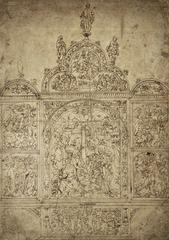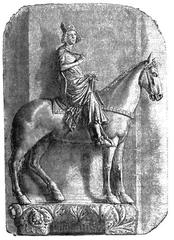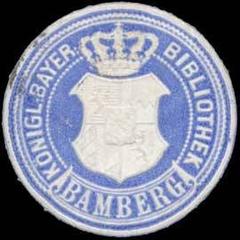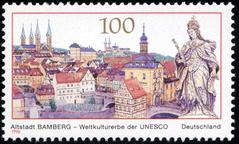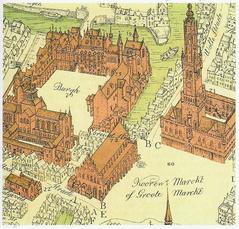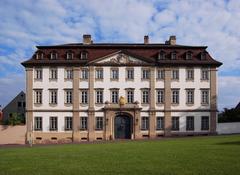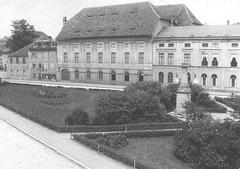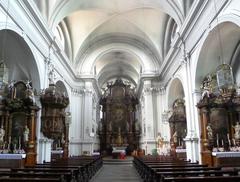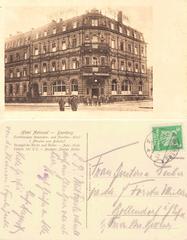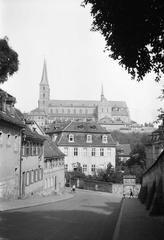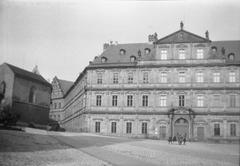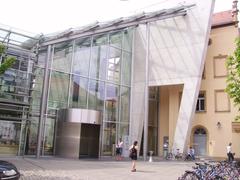
Altstadt Bamberg: Visiting Hours, Tickets, and Historical Sites Guide
Date: 04/07/2025
Introduction
Altstadt Bamberg, the historic heart of Bamberg, Germany, is an outstanding example of medieval urban planning and cultural continuity. Recognized as a UNESCO World Heritage Site since 1993, the Old Town’s origins stretch back over a millennium and reflect the vision of Emperor Henry II, who sought to create a “second Rome” in Franconia. Spread across seven hills and surrounded by the bifurcated Regnitz River, Bamberg is divided into three primary districts—Bergstadt (Hill Town), Inselstadt (Island District), and Gärtnerstadt (Market Gardeners’ District)—each preserving layers of history from Romanesque cathedrals to vibrant market gardens. Iconic landmarks such as Bamberg Cathedral, the Altes Rathaus perched on its own island, and the lively Grüner Markt showcase the city’s architectural and cultural richness.
This guide provides an in-depth look at Altstadt Bamberg’s history, must-see attractions, visiting hours, ticketing information, accessibility, travel tips, major events, and recommended day trips. Whether you’re a history buff, a culture enthusiast, or a casual traveler, this resource will help you plan and enjoy your visit to Bamberg’s living heritage. For official updates and visitor information, consult the UNESCO World Heritage listing and the Bamberg Tourism Board.
Table of Contents
- Early Foundations and Medieval Development
- Urban Expansion and Cultural Flourishing
- Urban Structure and Key Districts
- Major Attractions
- Visiting Hours and Tickets
- Accessibility and Practical Tips
- Nearby Attractions and Day Trips
- Annual Events and Local Traditions
- Frequently Asked Questions (FAQ)
- Call to Action
- References
Early Foundations and Medieval Development
Bamberg’s documented history begins in 902 CE, quickly rising in prominence after Henry II established it as a bishopric in 1007. His vision shaped the city’s urban and religious landscape, leading to a city plan marked by a cross-shaped arrangement of four major churches—St. Michael’s, St. Stephen’s, St. Gangolf’s, and St. Jacob’s—underlining Bamberg’s spiritual and civic significance (UNESCO; Everything Everywhere). Its strategic riverine location made Bamberg a commercial and cultural crossroads (Best Places to Visit Germany).
Urban Expansion and Cultural Flourishing
From the 12th century, Bamberg became a bridge between Slavic and Central European cultures, influencing urban planning in northern Germany and Hungary (Everything Everywhere). The late 17th and early 18th centuries brought a cultural renaissance, notably under the Dientzenhofer architects and Balthasar Neumann, as well as Enlightenment-era Prince-Bishop Franz-Ludwig von Erthal (One Million Places).
Urban Structure and Key Districts
Bergstadt (Hill Town)
Bergstadt rises above the city, crowned by religious and aristocratic landmarks. The district is characterized by winding, cobbled lanes and steep hills. Its seven hills, each with a significant church, earned Bamberg the nickname “Franconian Rome” (Wikipedia).
Inselstadt (Island District)
The commercial and civic heart of Bamberg, Inselstadt occupies the islands formed by the Regnitz River’s split. Notable for its bridges—especially the Obere Brücke (Upper Bridge)—this district features the Altes Rathaus on its own island, the lively Grüner Markt shopping street, and a mix of shops, cafes, and historic buildings (LaidBackTrip).
Gärtnerstadt (Market Gardeners’ District)
Gärtnerstadt reflects Bamberg’s unique tradition of urban agriculture, with long, narrow plots for vegetable cultivation interspersed among homes. This living heritage is explored in the Market Gardeners’ and Wine-Growers’ Museum (Wikipedia).
Major Attractions
Bamberg Cathedral (Bamberger Dom)
A UNESCO-listed Romanesque and Gothic masterpiece, known for its four towers, the Bamberg Horseman statue, and the tombs of Emperor Henry II and Pope Clement II (Wikipedia).
- Hours: Daily 9:00 AM–5:00 PM
- Tickets: Free entry; guided tours available for a fee
Altes Rathaus (Old Town Hall)
Famed for its dramatic position on an island in the Regnitz, half-timbered façade, and Baroque frescoes. Houses the Ludwig Collection of porcelain (LaidBackTrip).
- Hours: Tues–Sun, 10:00 AM–5:00 PM; closed Mondays
- Tickets: €5 adults; reduced rates for students/seniors
Neue Residenz & Rose Garden
The former prince-bishops’ palace features opulent rooms and an extensive rose garden with panoramic views (LaidBackTrip).
- Hours: Neue Residenz: 10:00 AM–5:00 PM; Rose Garden: daylight hours
- Tickets: €7 combined with Alte Hofhaltung
Alte Hofhaltung (Old Court)
A Renaissance palace complex and former bishop’s residence, now housing the Bamberg Historical Museum (Wikipedia).
- Hours: 10:00 AM–5:00 PM
- Tickets: Included with Neue Residenz ticket
Michaelsberg Monastery
A Baroque monastery with gardens, a brewery, and city views (LaidBackTrip).
- Hours: Church and gardens 9:00 AM–6:00 PM
- Tickets: Free entry; brewery/restaurant extra
Little Venice (Klein-Venedig)
Colorful, half-timbered former fishermen’s houses along the river. Best viewed from a boat or promenade (Time Travel Turtle).
Market Gardeners’ and Wine-Growers’ Museum
Explores Bamberg’s urban gardening, with exhibits on horticulture and local history (Wikipedia).
- Hours: Wed–Sun, 11:00 AM–4:00 PM
- Tickets: €3
Grüner Markt
Bamberg’s main pedestrian shopping street, bustling with local life and market stalls (Wikipedia).
Obere Brücke (Upper Bridge)
A 15th-century bridge connecting the riverbanks, offering great views and photo spots (Wikipedia).
Altenburg Castle
Located on the highest of Bamberg’s seven hills, this medieval castle features panoramic views (LaidBackTrip).
- Hours: Apr–Oct, 10:00 AM–6:00 PM; winter hours vary
- Tickets: €4 adults
Visiting Hours and Tickets
- General Hours: Most major attractions are open daily from 9:00 AM to 5:00 PM (some close Mondays or have seasonal changes).
- Tickets: Prices typically range from €3 to €10 per site. Consider the Bamberg Card for combined entry and transportation (Tourspilot).
- Guided Tours: Walking tours, beer tours, and themed experiences are available via the Bamberg Tourist Information Centre (Bamberg Tourism Board).
Accessibility and Practical Tips
- Pedestrian Friendly: The Old Town is compact and best explored on foot. Some areas feature steep, cobbled streets—wear sturdy shoes.
- Wheelchair Access: Many main attractions are wheelchair accessible; however, some historic buildings and streets may present challenges (Pelago).
- Getting There: Bamberg is accessible by train from Nuremberg (45 min), Würzburg, and Munich. Driving is possible but parking is limited in Altstadt (WanderInEurope).
- Public Transport: Local buses, taxis, and bicycles are available for longer distances (Bamberg Public Transport Information).
- Cash: Some small establishments accept only cash (Euro). ATMs are widely available (Pelago).
- Language: German is primary, but English is widely spoken in tourist areas.
- Dress Code: Modest attire recommended when visiting churches.
Annual Events and Local Traditions
- Sandkerwa (August): A lively folk festival featuring music, parades, and the “Fischerstechen” river jousting (Tourspilot).
- Christmas Market (December): The Old Town becomes a festive marketplace.
- Beer Culture: Bamberg is home to nine traditional breweries, famed for Rauchbier (smoked beer) (WelterbeDeutschland).
- Market Gardening: The Gärtnerstadt’s heritage is celebrated with the annual “Bamberger Zwiebeltreterfest.”
Nearby Attractions and Day Trips
- Nuremberg: Medieval Old Town, Imperial Castle, museums (PlanetWare).
- Würzburg: UNESCO-listed Residenz, wine region (PlanetWare).
- Franconian Switzerland: Castles, hiking, and breweries (PlanetWare).
- Schloss Seehof: Baroque palace and gardens nearby.
- Lisberg Castle: One of the region’s oldest castles.
- Forchheim: Historic town with annual beer festival.
- Sieben-Flüsse-Wanderweg: Scenic hiking and cycling trails.
Tip: Use a Bayern Ticket for unlimited day travel in Bavaria (WanderInEurope).
Frequently Asked Questions (FAQ)
Q: Are tickets required for Altstadt Bamberg?
A: The Old Town is free to enter; individual sites may have entry fees.
Q: What are typical opening hours for attractions?
A: Most open 9:00 AM–5:00 PM, with some seasonal variation. Always check in advance.
Q: Are guided tours available in English?
A: Yes, bookable through the Tourist Information Centre (Bamberg Tourism Board).
Q: Is Altstadt Bamberg wheelchair accessible?
A: Many main sites are accessible, though cobbled streets and some inclines may pose challenges.
Q: Best time to visit?
A: Spring and autumn for mild weather and festivals; December for the Christmas Market.
Call to Action
Plan your visit to Altstadt Bamberg today! For the latest updates on opening hours, tickets, and events, check official resources and download the Audiala app for guided tours and insider tips. Explore more articles on our website for travel inspiration and follow us on social media for real-time updates.
References
- UNESCO World Heritage listing
- Bamberg Tourism Board
- Bamberg Public Transport Information
- Everything Everywhere – UNESCO World Heritage Site 223 Town of Bamberg
- Best Places to Visit Germany – Bamberg Bavaria Germany UNESCO Site
- One Million Places – Bamberg Sights & Attractions
- LaidBackTrip – Guide to Bamberg Germany
- Time Travel Turtle – Things to Do in Bamberg
- WanderInEurope – Essential Tips for Planning a Trip to Bamberg Germany
- Pelago – Bamberg Things to Do
- Welterbe Deutschland – Bamberg Old Town
- PlanetWare – Bamberg Tourist Attractions
- Tourspilot – Bamberg Itinerary


